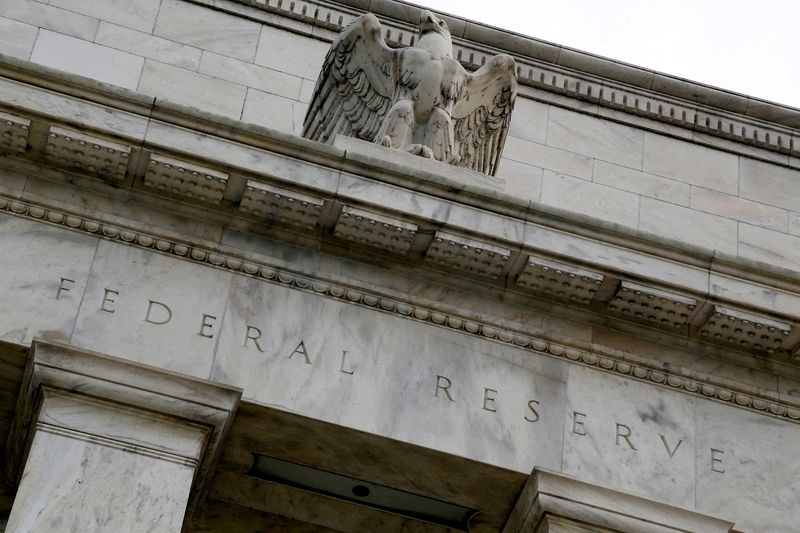By Davide Barbuscia
NEW YORK (Reuters) - A gauge measuring the borrowing costs on loans between banks and other participants in the U.S. repurchase agreement (repo) market hit its highest level since it was launched about five years ago, New York Federal Reserve data released on Friday showed.
The Secured Overnight Financing Rate (SOFR), a measure of the cost of borrowing cash overnight collateralized by Treasury securities, hit 5.4% on Thursday - the highest since April 2018, when the New York Fed began publication of the rate.
A spike in the price for repurchase agreements, or repos - in which investors borrow against Treasury and other collateral - can be a sign that cash is getting scarce in a key funding market for Wall Street.
Market participants, however, said the recent rise was related to borrowing costs being driven up because many dealers have closed their books for the year, limiting the availability of funding.
"The rise in SOFR is directly related to the demand for year-end financing needs and the lack of counterparties doing financing the last day of the year," Tom di Galoma, managing director and co-head of global rates trading at BTIG, said on Friday. "Many have closed their books for the year, and it is pushing SOFR higher."
Another measure of the cost of borrowing short-term funds backed by U.S. Treasuries spiked this week to its highest level since September 2019, when dwindling bank reserves forced the Federal Reserve to intervene.
The DTCC GCF Treasury Repo Index, which tracks the average daily interest rate paid for the most-traded General Collateral Finance (GFC) Repo contracts for U.S. Treasuries, stood at 5.495% on Thursday, a four-year high.
“Year end pressure in funding markets is normal,” said Spencer Hakimian, CEO of Tolou Capital Management, a New York-based macro hedge fund.

“Banks tend to slow down activity to bolster their balance sheets for compliance purposes ahead of the new year. This, in itself, is nothing to be worried about - unless it persists through January,” he said. This week's increased usage of the Federal Reserve's reverse repo facility, through which money market funds lend to the Fed, was evidence of money market funds wanting to invest cash but lacking private counterparties, market participants said. Cash flowing into the Fed's reverse repo facility jumped to $829.6 billion on Dec. 28 from $772.3 billion as of the end of last week.
Steven Zeng, U.S. rates strategist at Deutsche Bank, said the trend should reverse as the new year starts next week. He said the SOFR rate was still within the federal funds rate range of 5.25% to 5.5%. "It's not telling me that the funding scarcity in repo market is worse than usual. To me it really is the usual year-end behavior as banks reduce their balance sheet usage," he said.